8/15日に3作目のソロ・アルバム「稜線」を発売、アコーディオンの可能性をここまで追及している姿は狂気に近く美しい。
インタビューVol.3は佐藤 芳明さんです。
※経歴・ライブ・活動情報及び英訳は文末にございます。(English translation is below,after the Japanese interview.)
――佐藤さんはアコーディオン奏者の中ではとても個性の強い音色を奏でる方だと思うのですが、ご自身で意識していることや目指しているものはありますか?
「人と違うように弾こう、とは全然考えてないです。僕が思う音の出し方をしていて、結果それが個性だと思われるのであれば、そうなのかも知れませんね。」
――指導者の方にそういう指導を受けられていたとか?
「僕の先生(Daniel Mille)は『お前はお前で勝手にやれ』っていう感じでしたね(笑)。なので、指導とかは全然なくて、自分で考えてやってみた結果が今の演奏スタイルになっています。楽器の音の、立ち上がり始めから消えるまでがどうなっているか、というのを自分なりに考えて弾いているつもりです。
色々なジャンルの楽曲を色々な人と演奏する際に、そこに溶け込む様になる為に、すごく極端な言い方をすると“アコーディオンをアコーディオンらしく弾かない”ようにしています。例えばふわーっと立ち上げてふわーっと消えるような弾き方は、とてもアコーディオンらしいといえばらしいんですけど、そればかりやっていると他の楽器とのアンサンブルは難しいんですよね。そういう弾き方だけで、例えば管楽器のセクションに混じってリズムが肝になる様なフレーズを彼らと一緒に弾いたら、多分ちょっと嫌な顔されると思うんですよ。だからそういう時は、音の立ち上がりや音の切れ方を、彼らに合わせて弾く様にします。
つまり、アンサンブルにちゃんと溶け込むような演奏をするために、音が出て消えるまでをコントロールしようと思っていて、その為の練習をしてきました。他の楽器にうまく混ざり合うように弾くとか、他の楽器の音の立ち上がりや消え方を真似する、という発想なので、アコーディオンの都合は後回しです。」
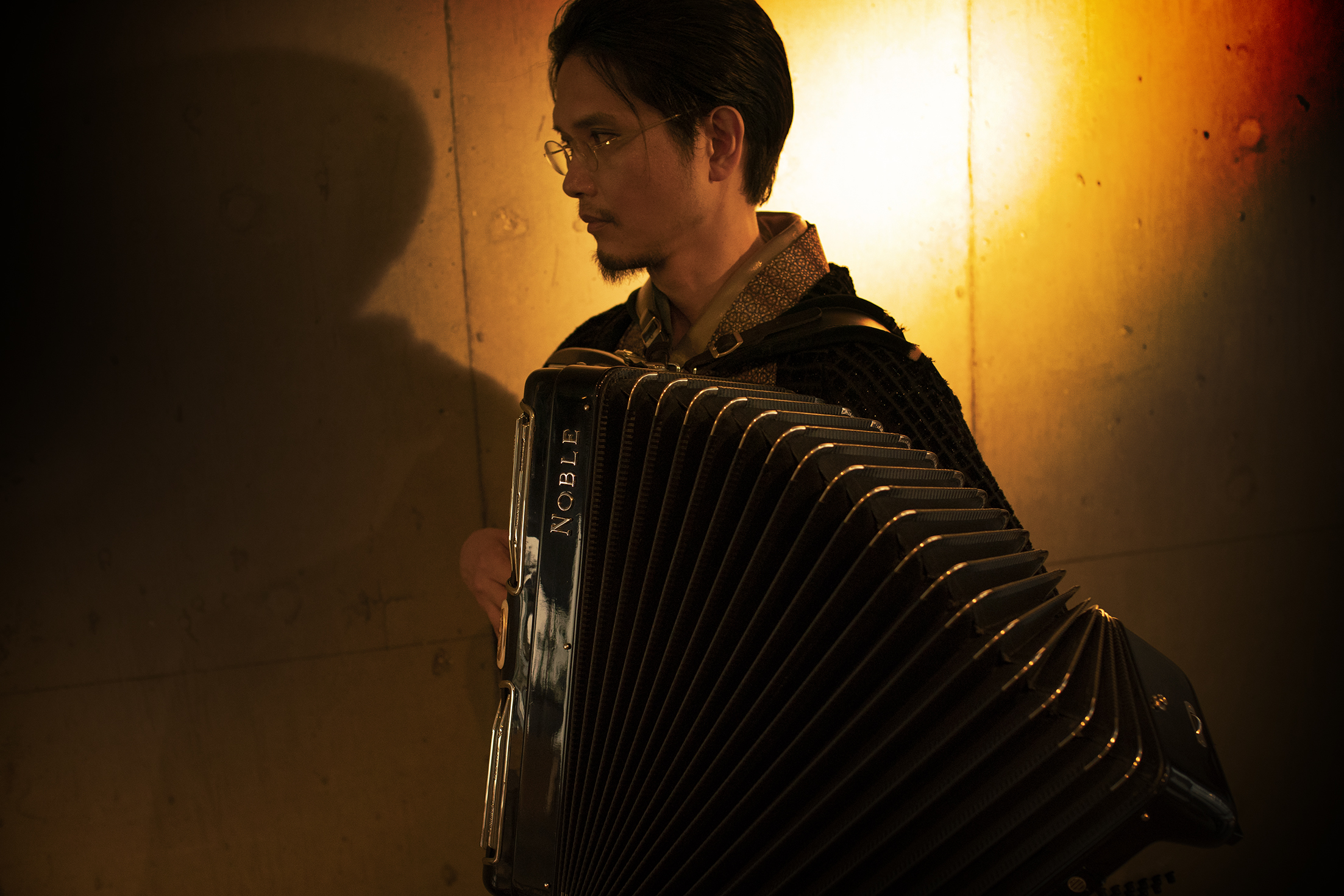
――アコーディオンでジャズをプレーされている方は少ないですが、その理由のひとつにアコーディオンはジャズに向いてないと世間では言われていたりしますが、そんななかでも佐藤さんはジャズを弾いていらっしゃいますよね。
「アコーディオンでジャズを弾く、ということはそれほど特別なコトだとは思わないですね。楽器は、それを演奏する人が何を演奏したいかだと思うし、その人が今まで何を聴いてきたかということも大事ですよね。僕の場合は、アコーディオンを始めた時に、それまで聴いてきた色々な音楽をこの楽器で表現したいと思って、それが今でも続いている感じです。
『練習時間が1時間あったら、40分は人の演奏を聴け』って仰っていた方が居たのですけど、それなんですよね、本当に。以前、ジャズを勉強してるっていう人と話をしていて、『マイルス・デイヴィスって知ってる?』って聞いたら知らなかったのね。もちろん、それを知らなくても弾ける人は弾けるんだろうけど、僕の場合は沢山聴いて自分なりに受け止めたものでないと弾けない。ちゃんとそのやりたい楽曲を聴いていれば、楽器が何であれ多分あんまり関係ないんです。ファゴットでジャズやる人もいれば、ホラ貝でやる人もいるし、いろんな楽器でやる人がいるから、アコーディオンがジャズには向いていない、とはあまり思わないです。」

――なるほど。では最後に佐藤さんオススメの練習方法があれば教えてください。
「まず楽器の中身のことを知らないと始まらないな、って思います。
楽器を買う時って、カタログに内側の写真ってまず載っていないし、楽器屋さんで内側を見て買ったりしないじゃないですか、ほとんどの場合。これはすごい問題だと思っていて。中身を知らずに演奏なんて出来ないですよ。バイオリンやギターやサックスや、他のほとんどの楽器は、外側を見れば音の出る仕組みが分かりますから、アコーディオンでも特に確認しないんですよね。
でもアコーディオンに限って言えば、外側から見ただけでは音の出る仕組みはほとんど分かりませんから。最低限まず内側がどういう仕組みになっていて、どうやって音が出る楽器なのか、ということを理解するのはすごく大事だと思います。
それから、自分で練習方法を発見できる人は上達が早いと思います。
僕が理想だと思う、上達する為の道筋は、まず目標がはっきりしていること。自分はこういう風に弾きたい、こういう風になりたい、こういう演奏がしたい、っていうことがハッキリしていた方がいいです。その次に、今の自分がどれだけ出来るのか、もしくは出来ないのか、ということをちゃんと把握すること。それが分かれば、あとはその目標と現実の間を埋めていけばいいワケです。自分が出したい音を出す為に、どのような練習をすれば良いのか、それを自分で見つけられたら1番いいんですけどね。それさえ分かれば上達も早いと思います。日本の教育現場ではあまりそういうやり方は見受けられないので、なかなか難しいとは思うけど。
ちなみに僕の先生は『俺はこうやるけど、お前はどうする?』が口癖でした(笑)」
――ありがとうございました!
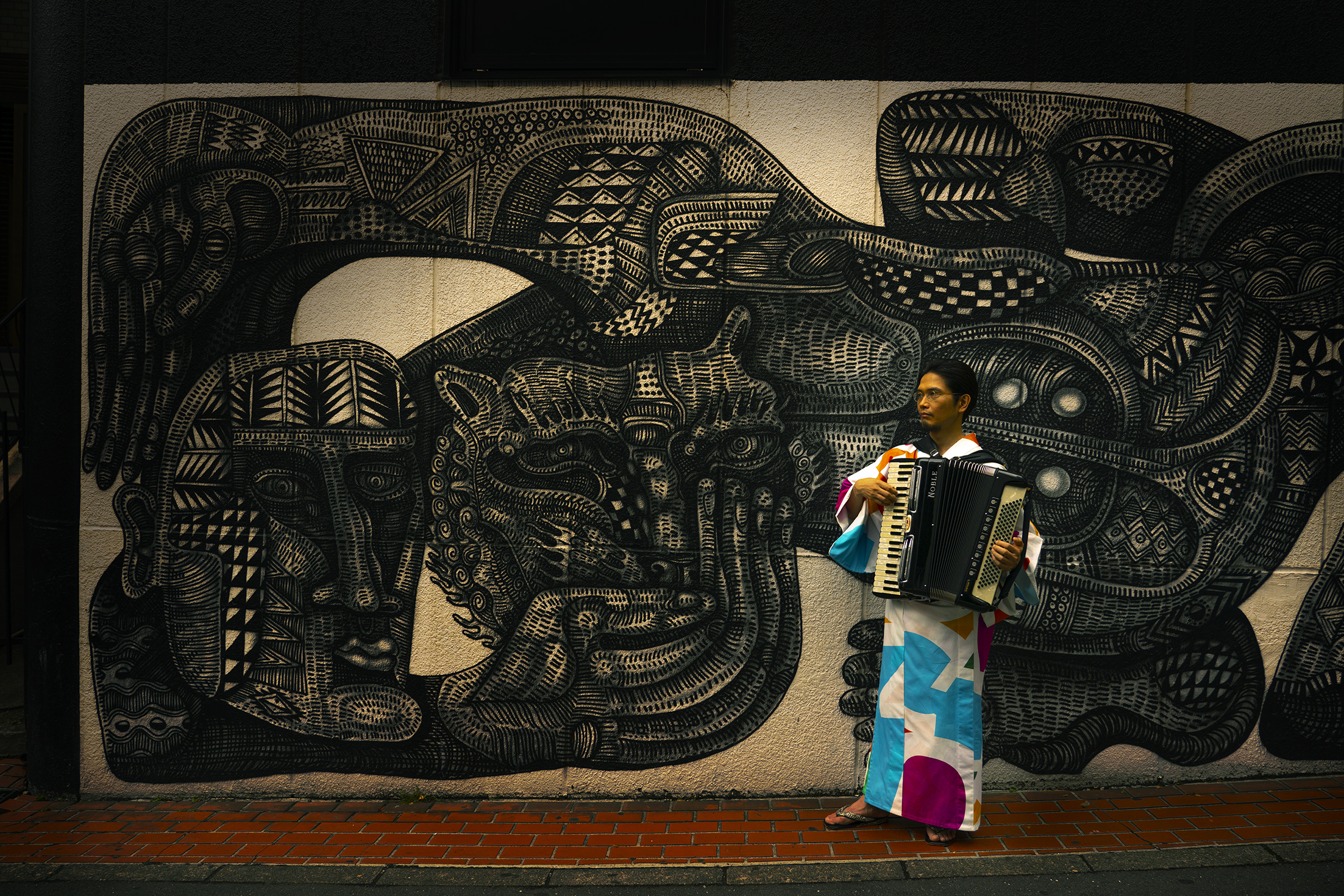
撮影:大崎 聡 / ヘアメイク:鎌田 真理子 / スタイリスト:露木 藍 / Direction:蛇腹党
衣装:ROBE JAPONICA https://robe-japonica.jp/(その他) jabara Party
撮影協力:ROBE JAPONICA https://robe-japonica.jp/
Li-po http://li-po.jp/
【佐藤芳明 プロフィール】
国立音楽大学在学中に独学でアコーディオンを始め、卒業後渡仏、C.I.M.Ecole de JazzでアコーディオニストDaniel Milleに師事。
既存のアコーディオンのイメージにとらわれない独自のサウンドで、ライブ、レコーディング、アーティストサポート、舞台音楽など、様々な現場で数多くの仕事をこなし、国内外を問わずジャンルを超えて幅広く活動。
『ガレージシャンソンショー』『森山威男グループ』『ヨルダンマルコフブルガリア五重奏団』など個性的なユニットに在籍する一方、スタジオミュージシャンとしては椎名林檎、三宅純、梶浦由記、大友良英、水樹奈々、桑田佳祐など数多のアーティストのレコーディングに参加、CMや劇伴でもファーストコールのアコーディオン奏者としてあらゆるオーダーに応え続けている。
佐藤芳明SOLO~3rd Album《稜線》リリース
詳細は特設サイトで。
【LIVE情報】
個人のサイト http://www.geocities.jp/acc_sssaaatttooo/
個人レッスン 無し
【English】
Q: You are an accordion player with a distinctive individual sound. Is there anything in particular that you pay attention to, or are aiming for in your playing?
Sato: I don’t think about trying to be different from others at all when I play. I produce the sound that I want to make, and if people consider that to be my personal characteristic, maybe they’re right.
Q: Were you taught to make that kind of sound?
Sato: My teacher Daniel Mille’s attitude was: “You do what you want.” (Laughs) He didn’t really tell me what to do. So my style is the result of my own trial and error. When I play, I have my own idea of the process of the sound produced by the instrument, from onset to endpoint.
This may sound extreme, but when I play with musicians in various genres, I don’t play the accordion like a typical accordion player, because I want to blend in. For example, the way the accordion’s notes have a soft onset and fade-out is typical of the instrument, but if you always play like that, it gets in the way of playing in an ensemble. Let’s say you’re playing a phrase in which rhythm is the key factor with some wind instruments. If you can only play in the typical accordion way I just described, the wind players won’t be impressed. So in that situation I change the way I play so that the notes start up and end sharply, just like them.
In other words, I try to control the process of the sound I produce from onset to endpoint to blend in with the ensemble, and have been practicing with that goal in mind. My priorities are to fit in well with other instruments and to emulate the way other instruments’ sounds start up and fade out. What’s easier for the accordion is secondary.
Q: Not many people play jazz on the accordion. One of the reasons for this is the popular opinion that accordions are not suited to jazz. But you are an accordionist who plays jazz. Why is that?
Sato: I don’t think there’s anything unusual about playing jazz on the accordion. Musicians are free to play what they want to play with their instrument, and what each player has been listening to in the past is an important resource. When I began playing the accordion, I wanted to express a wide range of music with the instrument, and I’ve just continued to do that.
It’s so true what they say about listening to other people’s playing for 40 minutes out of every hour of practice time that you have. I was once talking to someone who was studying jazz. I asked them whether they knew Miles Davis, and they said no. Of course some musicians can play jazz without knowing who Miles Davis is, but in my case, I need to listen to a lot of music and digest it in my own way before I can play it. If you are listening to the piece you want to play, it doesn’t really matter what the instrument is. Some people play jazz on the bassoon and others with a conch shell. I don’t find the accordion unsuitable for jazz, because people play jazz with so many different instruments.
Q: Thank you. Finally, do you have a recommended practice method?
Sato: First, you must learn what the instrument looks like inside. When you are looking for one to buy, you will never see photos of inside the instrument in catalogs and you wouldn’t normally open one up in a store. I think that’s a real problem. You can’t play an instrument without knowing what’s inside. People don’t normally look inside an accordion, because with most other instruments like the violin, guitar, and saxophone, you can tell how the sound is produced from the outside.
But accordions are the exception. It’s almost impossible to understand how the sound is made from the outside. At the very least, you must understand how the accordion works internally and how it produces sounds.
Second, people who can discover their own practice methods will improve quickly.
My ideal roadmap to improvement is first to have a definite goal. It’s better to have a clear idea of how you want to play, what kind of player you want to be, and what type of performance you are aiming for. Have an accurate understanding of what you can or cannot do now. Then all you have to do is to fill the gap between the status quo and your goal. Ideally, you find out for yourself how to practice so you can produce the sound you want to make. If you know that, you will improve quickly. Unfortunately, this method isn’t applied much by music teachers in Japan.
My teacher always used to say: “This is how I do it, but what about you?” (Laughs)


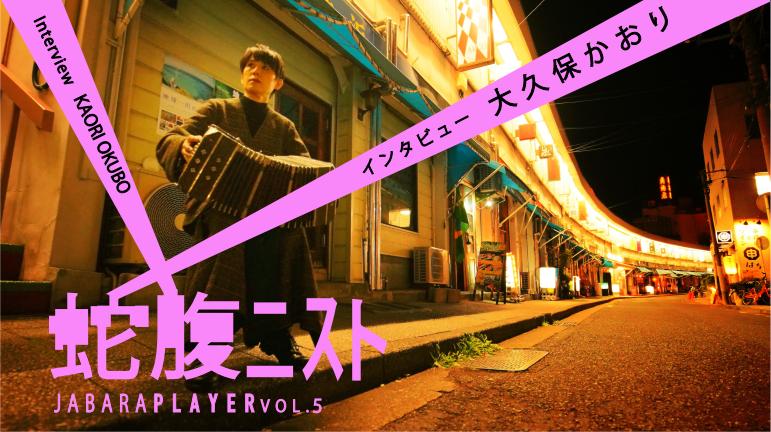
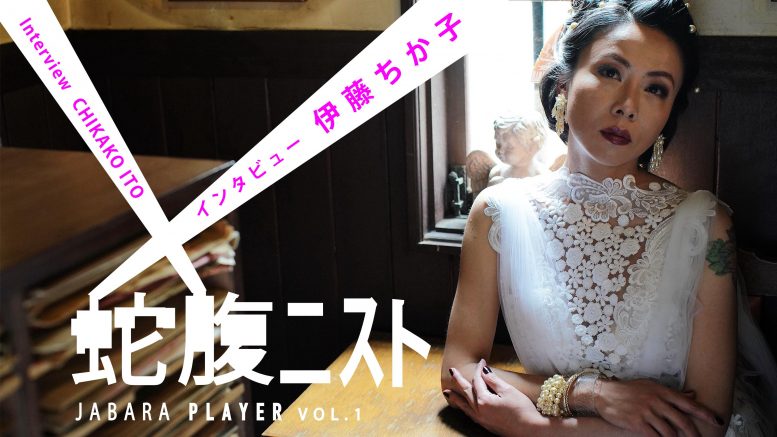
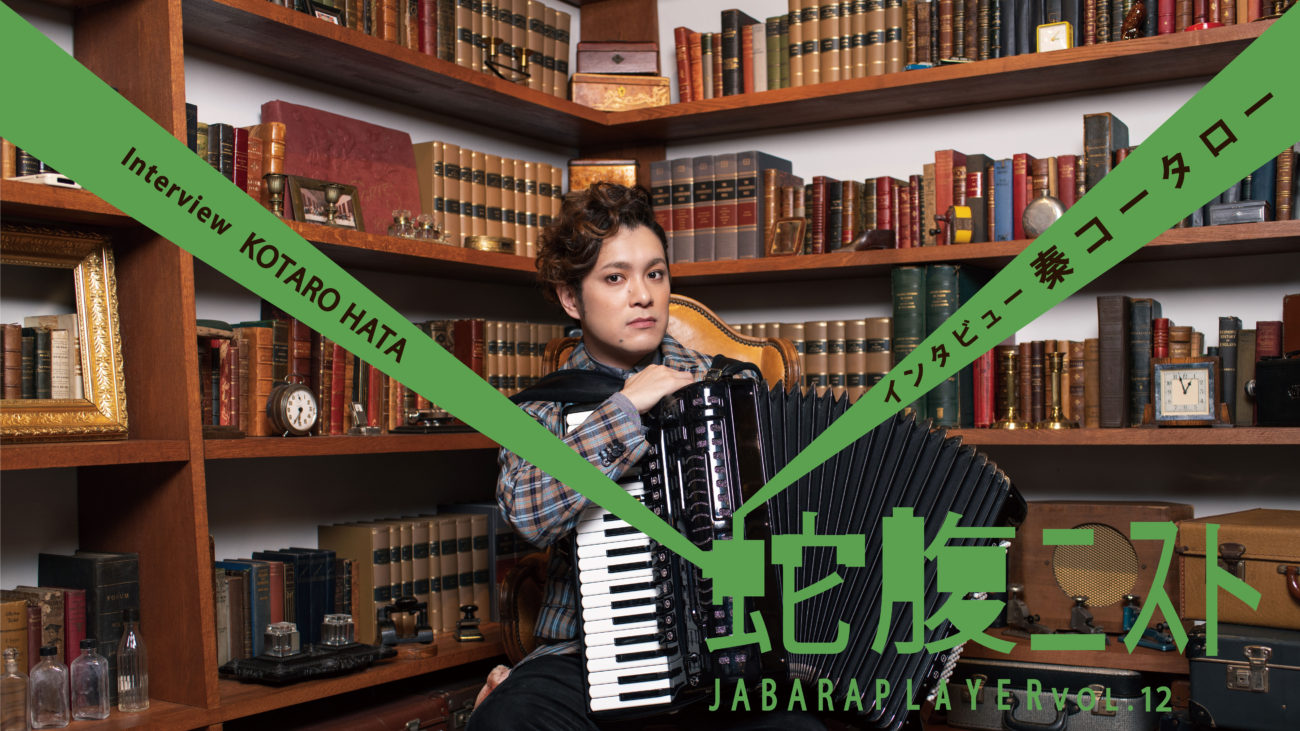
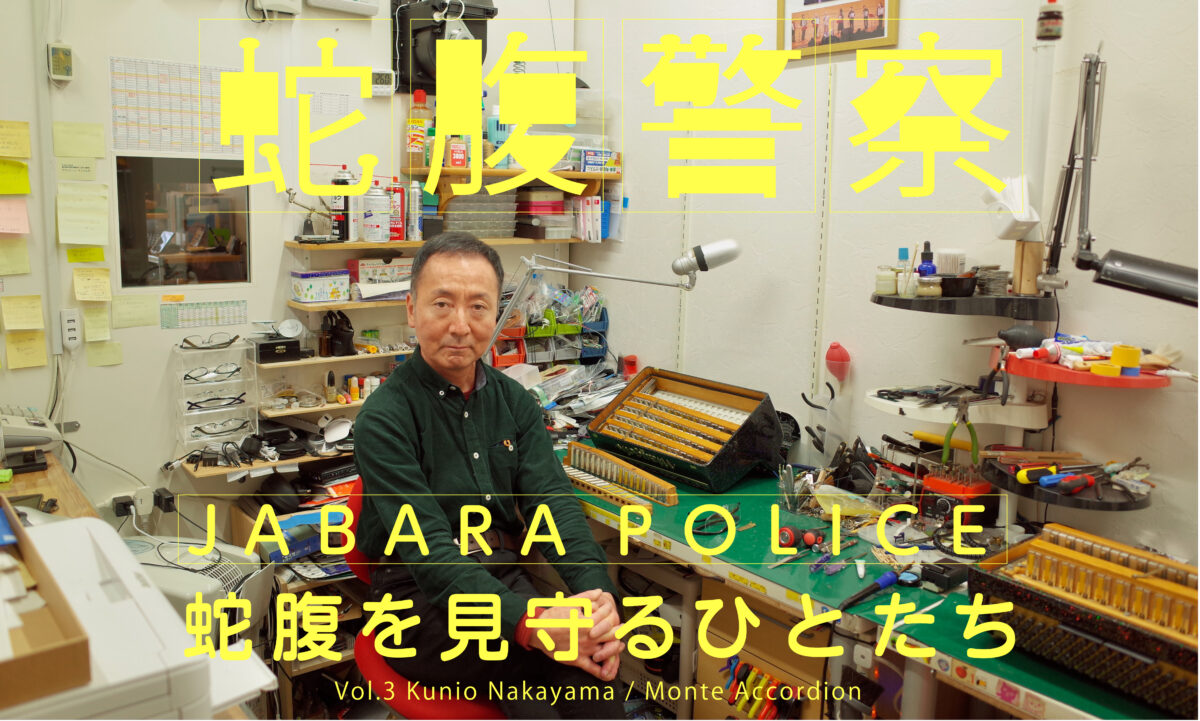
最初のコメント "Interview Vol.3 佐藤芳明[鍵盤アコーディオン]Yoshiaki Sato[PianoAccordion]"